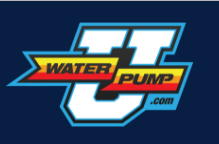Gasoline engine automobiles use both mechanical and electronic fuel injection systems. Diesel engines are mostly equipped with mechanical type injection systems. Due to advancement in technology, mechanical injection system were replaced by electronic fuel injection in diesel engines. We are going to discuss the working of continuous Injection system.
 Working of continuous injection system (CIS)
Working of continuous injection system (CIS)
The Continuous Injection System (CIS) is a mechanical fuel injection system. The basic working principle of CIS is continuously injection of fuel into the intake valve of the engine through the electric pump. The measure of fuel supplied is measured by an air flow measuring device. Some CIS systems are equipped with feedback controllers.
The primary fuel circuit comprises an electric pump used to suck the fuel from fuel tank. The fuel then enters an accumulator. The accumulator is a container that is located in the fuel line. It consists of a spring-loaded diaphragm. The diaphragm performs fuel damping and delays the pressure build-up initially when you start the engine.
When you shut down the engine, the expanded chamber (in the accumulator) will keep the system under required pressure for a good hot restart with no vapor locking – a problem generally associated with gasoline engines. Fuel is supplied through a large fuel filter to mixture control unit.
The mixture control unit is an important component of the CIS system. It consists of an airflow sensor and a fuel distributor. The air sensor connects a counterbalancing lever.
The air sensor and lever are freely suspended bodies that move up and down on a fulcrum connected to the lever. The accelerator pedal link is connected to a throttle that is closer to the manifold and intake valves of an air sensor. By pressing the accelerator pedal, the throttle valve opens.
In order to maintain accurate fuel pressure, a pressure regulator or a pressure relief valve is located in the primary fuel circuit of the fuel distributor and the excess fuel is sent back to the fuel tank via a return line. An appropriate pressure difference has to be maintained and it’s controlled by a pressure valve.
The valve consists of a spring loaded diaphragm of steel and an outlet to the fuel injectors. The diaphragm keep lower chambers and the upper chambers away from each other. The valves keeps the exact pressure difference. The diaphragm opens to the extent depending on the measure of fuel flows.
The diaphragm opens less if a lower amount of fuel goes into the upper chamber, and less fuel goes to the injectors. A consistently maintained difference in pressure in the upper and lower chambers.
